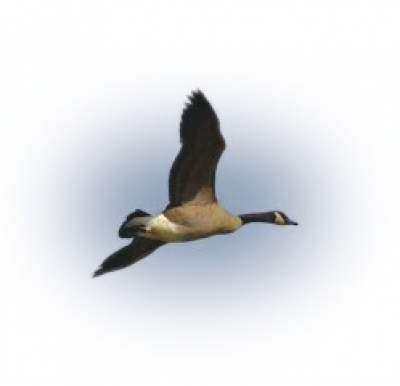Sunday, 21 July 2019 23:46
Winter shorebird survey
Winter shorebird survey results at Lake Wairarapa
Steve Playle, Hugh Robertson and Nikki McArthur took advantage of excellent weather conditions on June 20 to carry out a winter shorebird census at Lake Wairarapa. The water level was relatively high (10.3 metres above datum), so most of the mudflats were under water and in turn that influenced some of the
species counts.
species counts.
By the end of the day they had counted 22 species of shorebirds and waterfowl, totalling 5647 birds. Highlights of the day included four Australasian bittern, two white herons and a little egret (the latter a relatively rare Australian vagrant). Hugh encountered a flock of 122 red-billed gulls at the Oporua Floodway, which
is exceedingly unusual for this site. Red-billed gulls are extremely rare visitors to Lake Wairarapa, having been reported only a handful of times previously (11 birds in February 1948, “irregularly” between 1982-1983, 2 birds in April 1992 and 1 bird in February 2012).
is exceedingly unusual for this site. Red-billed gulls are extremely rare visitors to Lake Wairarapa, having been reported only a handful of times previously (11 birds in February 1948, “irregularly” between 1982-1983, 2 birds in April 1992 and 1 bird in February 2012).
A full summary of the species counted during June 20 census follows. For anyone who wishes to test their bird ID skills, or read background about any of the species recorded go to New Zealand (NZ) Birds Online website (http://nzbirdsonline.org.nz/).
Species
Dabchick
Black Shag
Little Black Shag
Little Shag
White-faced Heron
White Heron
Little Egret
Bittern
Royal Spoonbill
Black Swan
Canada Goose
Feral Goose
Feral Goose
Paradise Shelduck
Variable Oystercatcher
Pied Stilt
Banded Dotterel
Black-fronted Dotterel
Spur-winged Plover
Black-backed Gull
Red-billed Gull
Black-billed Gull
Caspian Tern
Total
Number
counted
38
74
38
15
74
38
15
21
2
1
4
10
2174
2174
1448
128
97
5
1000
42
66
39
136
122
176
11
5647
This is the third winter survey since initiating this work in 2011, so it’s now possible tobegin comparing average species counts from June 2011-2014 surveys with those from Hugh Robertson and Barrie Heather’s earlier set of surveys carried out between 1985 and 1994, for the section of shoreline between the Tauherenikau Delta and the Oporua Floodway. These comparisons give an early indication of some of the changes that appear to have occurred to the relative abundance of various bird species at the lake over the past 30
years. A number of species appear to have increased in abundance over the intervening time, among them NZ dabchick, black shag, little black shag, little shag, black-fronted dotterel and black billed gull. A smaller number of species appeared to have declined in abundance over the same period, including SI pied oystercatcher, pied stilt and spur-winged plover.
years. A number of species appear to have increased in abundance over the intervening time, among them NZ dabchick, black shag, little black shag, little shag, black-fronted dotterel and black billed gull. A smaller number of species appeared to have declined in abundance over the same period, including SI pied oystercatcher, pied stilt and spur-winged plover.
Species
Dabchick
Black Shag
Little Black Shag
Little Shag
Pied Shag
White-faced Heron
White Heron
Cattle Egret
Bittern
Glossy Ibis
Royal Spoonbill
Black Swan
Canada Goose
Feral Goose
Paradise Shelduck
Pied Oystercatcher
Variable Oystercatcher
Pied Stilt
Banded Dotterel
Black-fronted Dotterel
Wrybill
Spur-winged Plover
Sharp-tailed Sandpiper
Bar-tailed Godwit
Black-backed Gull
Red-billed gull
Black-billed Gull
Caspian Tern
Average count
1985-1994
1985-1994
5.1
11.6
3.1
2 15.0
0
10.5
0.1
0.1
0
0.5
0
X
X
X
X
14.7
5.6
607.9
187.5
32.3
0.1
57.5
0
0.6
X
0.1
1.5
1.6
Average count
2011-2014
2011-2014
52.3
39.0
69.3
15.0
0.3
12.0
0.3
0.0
1.7
0.0
1.7
692.0
966.0
134.0
24.0
0.7
3.0
516.7
159.0
45.0
0.0
13.3
0.3
0.0
58.3
40.7
195.0
9.0
Nikki explained the original aims of this survey work were relatively simple (i.e. to give the ability to describe changes that have occurredin the lake’s bird fauna over the past 30 years;
to allow them to detect future changes and to re-examine the relationship between shorebird abundance and water levels). You might be interested to know the data from these surveys have recently been put to a variety of other
uses, including:
• To provide quantitative evidence in support of an application to have the Wairarapa Moana wetlands recognised as a “wetland of international importance” under the Ramsar Convention.
• To provide evidence to support the Wairarapa Moana Wetlands (together with
the Ruamahanga River) being listed as an “Important Bird Area” under Birdlife
International’s global IBA programme.
• To form part of our flood protection department’s programme for monitoring
the health of riverbed-dependent bird populations on rivers affected by flood
protection activities (large proportions of the regional populations of several riverbed-dependent bird species overwinter at Lake Wairarapa).
• To provide regional population estimates for a number of shorebird species used for the development of a regional threat classification system for birds of the Wellington Region.
• And lastly, data collected during these surveys are combined with data compiled from other key shorebird sites around NZ to provide estimates of the national population sizes of a number of NZ’s shorebird species. These national
population estimates are in turn put to a variety of uses, including a regular review of national threat classification rankings and ongoing monitoring of the population health of Arctic-breeding migrants using the East Asian/Australasian Flyway, a major avian migration route stretching from Alaska and Siberia in the north to NZ and Australia in the south.
Thanks go to Ian Gunn, Tony Silbery and Bob Green for assistance preparing for this survey, and to Bob Green, Grant McGhie, Graham Field and Tim Loe for permission to access various points of the shoreline. The next scheduled shorebird survey at Lake Wairarapa is for November 2014.
Nikki McArthur
Environmental Scientist
Greater Wellington Regional Council
Published in
Issue 161
Tagged under

